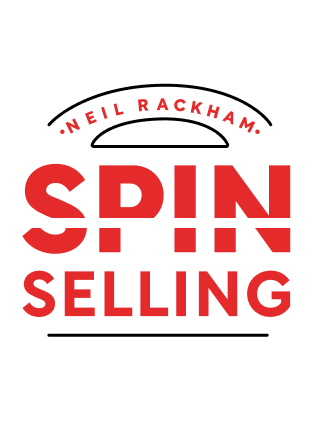

This article is an excerpt from the Shortform summary of "Spin Selling" by Neil Rackham. Shortform has the world's best summaries of books you should be reading.
Like this article? Sign up for a free trial here .
Why is understanding customer needs so important in the sales process? How can SPIN selling help?
Understanding customer needs not only helps you make a customer connection, but also helps form and eventually close the sale.
Understanding Customer Needs
In sales, a need is defined as a want or problem stated by the customer that the seller can address. Salespeople discover, develop, and work on understanding customer needs and expectations in the investigating stage of a call. This requires both questioning skills and an understanding of how customer needs develop.
In order to fully commit to understanding customer needs and expectations, you need to know that needs develop differently in small and large sales, and they require different sales approaches to gain commitment.
A customer’s need to buy a relatively inexpensive item can develop quickly, with little or no input from a salesperson. For example, you might be walking through an airport, and a $15 gadget in a store display catches your eye. Within a few seconds of looking at it, you feel a need to buy it. There’s very little time between the development of the need and your commitment to buy the gadget. Similarly, in a small sale, asking one or two problem questions that highlight a need may be enough to motivate the customer to buy a relatively inexpensive item immediately.
However, a customer’s perceived need for a bigger-ticket purchase takes much longer to develop. A sales rep uncovers and “develops” the need by exploring a problem the product will address, and creating an urgency to address it.
Often, sales reps who are deemed “weak closers” are actually poor investigators—they fail to get commitments because they haven’t sufficiently developed the customer’s needs in the investigating stage.
Sales reps in major sales need special skills to help customers develop needs; the key is using SPIN questions.
Needs in Different-Size Sales
The differences between small and large sales underscore why reps in major sales need a unique skill set. This is part of understanding the marketplace and customer needs. Consider the example of the $15 gadget purchase at the airport compared to a large purchase:
- In the small sale, the buyer satisfied a personal need without consulting with anyone. In a major sale, the purchase is often being made for someone else—a company—and the customer needs to consult with others in the organization.
- Small sales are often spur-of-the-moment, and can have an emotional component—you may not have an urgent or rational use for the gadget; you just like the way it looks and feels. In contrast, large sales are usually lengthy and planned, not spur-of-the-moment or emotional.
- In small sales, the consequences of making a bad decision are small (the item gets shoved into a drawer, and you’re out $15), while in large sales, the consequence of a bad decision can be the purchaser getting fired.
In summary, as sales get larger:
- Needs develop slowly.
- The buying decision involves multiple people.
- Needs are rational (although they can still have an emotional component, such as when a CEO wants the most impressive office).
- A bad decision can have serious consequences.
Understanding Customer Needs and How They Develop
Understanding customer needs and expectations can be hard. Needs develop through a series of stages. Here’s how they evolve.
When you’re 100% satisfied with something—for instance, your laptop computer—you don’t feel a need for change. But when your satisfaction begins to erode, even to 99.9%, you have the beginning of a need.
When updating your software slows your computer down, you experience a glimmer of dissatisfaction that begins to grow. The limitations of your laptop start becoming apparent; in your mind, they develop into problems. You notice that the laptop loses its charge more quickly, and it definitely seems to be losing speed. But your belief that you have a problem doesn’t mean you’re ready to buy a replacement quite yet. Your problem has to evolve into a want and a drive to act. When you decide you want something—a faster, sleeker computer—you’re ready to buy.
So the stages of need development are:
- The item you have is no longer 100% perfect.
- You feel a hint of dissatisfaction.
- You start noticing flaws.
- You realize you have problems with it.
- You want to change it—now.
In small sales, your mind can run through these stages quickly, or even instantaneously. In major sales, the process of developing a need that becomes a want can take months or years.
Implied and Explicit Needs
There are two types of needs: implied and explicit. These are different in small and large sales. You’ll need to know this for understanding the marketplace and customer needs. In small versus large sales, they play out differently.
- Implied needs are problems and frustrations expressed by the customer—for instance, “I’m not happy with the quality our press is producing,” or “Our system creates too much waste.”
- Explicit needs are strong wants or desires expressed by the customer—for example, “We need a more efficient system,” or “We have to cut our procurement costs.”
In small sales, implied needs can result in sales success without further development into explicit needs. In fact, the more implied needs a rep can uncover, the greater the chances of making a sale. In these sales, implied needs are “buying signals,” or behavioral cues that the customer wants to buy; however, in large sales, this isn’t the case.
In large sales, the relationship between implied needs (customer problems) and making a sale is weaker. The number of implied needs you uncover has no bearing on sales call results.
In a large sale, implied needs are a starting point requiring further development into explicit needs. The quantity of needs you uncover isn’t important; it’s how you develop them. This is part of understanding the marketplace and customer needs.
In order to be a successful salesperson, understanding customer needs should be a priority. Understanding customer needs will make you a more successful and enthusiastic salesperson.

———End of Preview———
Like what you just read? Read the rest of the world's best summary of Neil Rackham's "Spin Selling" at Shortform .
Here's what you'll find in our full Spin Selling summary :
- What the SPIN in SPIN Selling stands for
- How to demonstrate real value to the person you're selling to
- How to get commitment from your customer to close the sale fast






